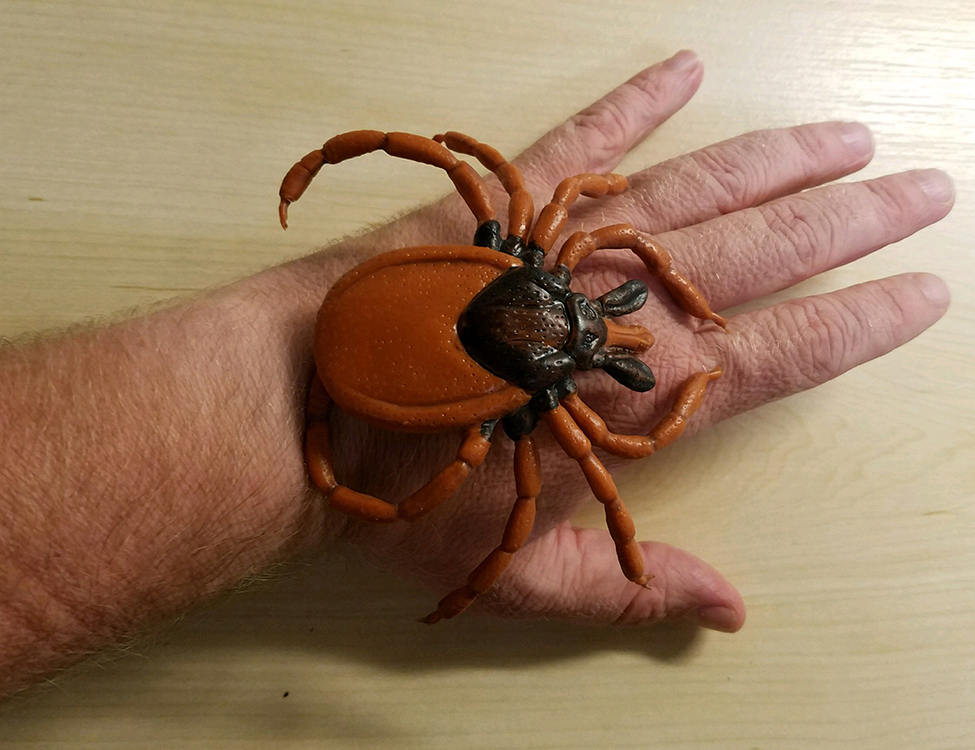For my next instalment of creepy critters for October, I decided to review the castor bean tick (also known in Europe as the sheep tick, Ixodes ricinus) by Germany-based 3B Scientific. I also chose this figure because it’s my forum avatar, and I have never presented it here. Much of this review was taken from my original walkaround on the forum (which this review will now replace). This figure is not a typical ‘toy’; 3B Scientific produces high-quality medical, veterinary, and zoology models for teaching purposes. I am not sure when this model was first produced, but it is still available on the 3B Scientific website as well as through laboratory supply dealers, such as VWR.

Ixodes ricinus is native to much of the Palearctic, including Europe, North Africa, Middle East, and northern Asia. Immature stages feed primarily on small mammals, birds, and reptiles, while adults feed on ungulates and dogs. One of the reasons I thought this figure would be appropriate for this month’s theme (other than that ticks freak people out) is its importance in the medical and veterinary realms as a vector of disease-causing agents (plus it’s nicely dressed in Halloween colors)! This species has been implicated in the transmission of Borrelia burgdorferi sensu lato (Lyme disease), Borrelia miyamotoi (tick-borne relapsing fever), Coxiella burnetii (Q Fever), Babesia divergens (babesiosis), tick-borne encephalitis viruses, and Louping Ill Virus. Its cousin in the Northeast of North America, I. scapularis, also transmits B. burgdorferi and B. miyamotoi, as well as Borellia mayonii (another Lyme agent), Babesia microti (babesiosis), Anaplasma phagotocytophilum (human granulocytic anaplasmosis), and Deer Tick Virus. In Australia, I. holocyclus is a major cause of tick paralysis. In general Ixodes can be nasty critters!

On to the figure. Given that this is a model designed for medical and veterinary professionals, it’s no surprise that it is very well done. It has all the hallmark features of Ixodes: no eyes, no festoons, long and slender mouthparts, and an inverted, u-shaped anal groove (that structure near the rear on the underside that looks like the St. Louis Arch). The color is also good, featuring a dark, solid-colored dorsal shield (scutum) on an otherwise pale body. Based on the short dorsal shield, this is either a nymph or an adult female (an adult male would have the dorsal shield covering nearly the entire dorsum). The body length is 6.0 cm (excluding mouthparts), making it 46:1-40:1 for a nymph or 20:1-16.7:1 for an adult female.

Well there we have it, my penultimate ‘Halloween’ review. This figure probably appeals most to specialists, but as I mentioned above it is still available. It is not cheap however. But if you want a cool, scary, interesting, and important species in your collection, this may be for you. I should point out Funrise Toys also made a smaller version of this species in their 1989 World if Insects Nature Collection, but that set, and figures from it, are very hard to come by these days.

Disclaimer: links to Ebay and Amazon on the AnimalToyBlog are affiliate links, so we make a small commission if you use them. Thanks for supporting us!




That last photo gave me shivers… true monster movie vibes 😀